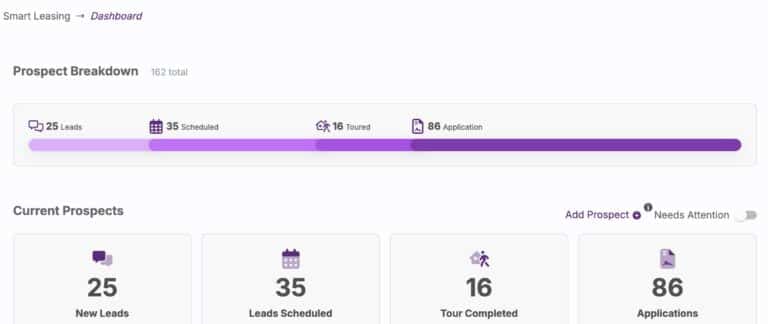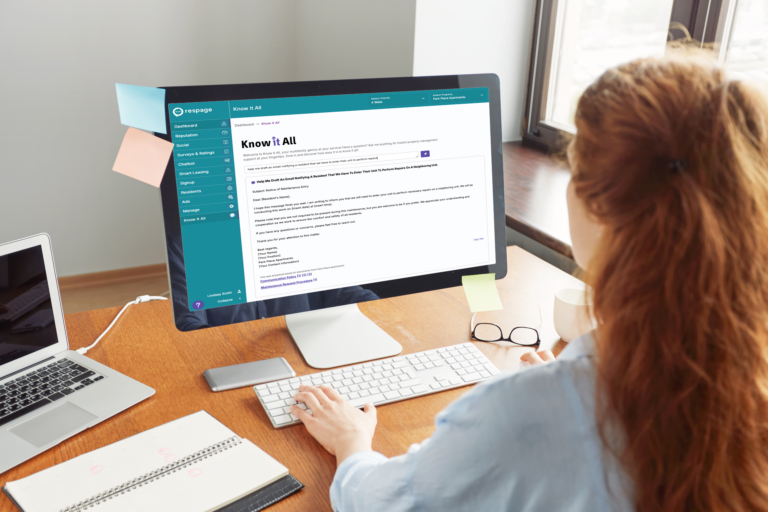Previously published in Abode: The Houston Apartment Association Magazine
Automation is a funny word. It can conjure up visions of a dystopian future where hardworking employees are kicked out of their jobs by uncaring machines. At the same time, “AI” has become a buzzword. Everything from your refrigerator to your autoresponder email sequence is now artificial intelligence.
The reality is different, however. The truth is AI technology and machine learning are helping management companies automate their leasing processes in ways that were never possible before. It doesn’t replace the job of a leasing agent; it simply makes it easier, less tedious and more productive (and an added bonus, it frees up your agents’ time for other tasks).
There are a lot of other misconceptions about AI solutions and the products companies just slap that title onto. But don’t worry – we will go over how you can tell the difference and the benefits of adapting a smarter, more optimized system.
What is AI Leasing?
Imagine if every leasing team had the perfect assistant. This assistant would answer every leasing inquiry that came in – no matter if it was through email, phone, text, ILS, or a chat via their website. Every prospect, within seconds, would receive the perfect answer to their question and specially tailored communication to push them towards a tour. It would follow up with everyone, it would suggest properties, get feedback, remind people of appointments. It would even help retain residents after a lease has been signed. It would work 24/7 – and you wouldn’t even have to pay it overtime.
That ideal helper is actually a virtual leasing assistant. Simply put, it’s a technology designed to automate (and improve) parts of the leasing process while mimicking how humans think and talk. It does this by analyzing huge quantities of data to “learn” what to say and how to say it – this is called Natural Language Processing (NLP).
Due to its sophisticated learning processing, there are very few NLP-enabled leasing assistants out there. Typically, leasing automation systems are touted as advanced chatbots, but are actually autoresponders, loaded with pre-set messages designed by the leasing team to respond to certain triggers. But that is not the case for NLP-enabled systems – as it creates every custom response itself, on the fly, without any human intervention.
How are Virtual Leasing Assistants being used today?
Primarily, leasing teams are using AI leasing assistants to make more of each lead and converting more of those leads into leases. Teams using such solutions see huge improvement in those metrics, though it can vary wildly depending on which particular virtual assistant they are using. Implementations of our own leasing automation solution, ResMate, have doubled lead-to-lease rate for some properties and, on average, shorten the time to an application to just five days.
That might seem odd, given that even with all the advances in technology, a good (human) leasing agent will still beat AI assistants in 1-on-1 interactions. When it comes to understanding what someone really needs, well, a human being can emphasize better than a bot. So why are leasing teams with AI assistants still outperforming those without them?
To be frank, most leasing agents don’t have the time to dedicate all their attention to a single prospect. If they did, they could do an amazing job answering that prospect’s questions, pushing them to tour, sending reminders at the perfect times, all of that. But multiply that across all of the leads a leasing agent has to handle, and there is just not enough time in the day.
Further, over half of inquiries come in after hours – meaning a virtual assistant makes up the difference by handling more leads that come in after your in-person staff goes home for the night. This tag-team effort ensures that there is a qualified leasing agent to answer questions, regardless of the time of inquiry.
AI helps leasing teams offload their most tedious tasks.
With a virtual leasing assistant available to handle incoming leads and follow up, it means that leasing agents can remove a large part of their weekly “to-do” list – the queue. No more answering simple questions about pricing, availability, and pet policies means a ton of freed up time and energy.
We find that there are an average of eight conversations/engagements that need to happen before someone decides to sign a lease. So that’s eight fewer conversations per lead a leasing team needs to handle.
That energy can be redirected into tasks that actually need dedicated attention, such as solving problems for current residents, improving processes, getting more leases signed, or handling those few prospect inquiries that can’t be handled via AI.
Deployment of AI leasing assistants in the real-world proves there is no ‘replacing’ a qualified human leasing agent. Rather leasing teams benefit exponentially from their new digital teammate, and usually become advocates of the AI leasing technology. It removes a lot of the rote work they do on a day-to-day basis, allowing them to focus on projects that really matter.
Given how AI leasing solutions boost lead-to-lease rates while also maximizing leasing team productivity with minimum human intervention, it’s clear that management companies employing one of these solutions have a distinct advantage over ones that don’t.
AI will be essential in any competitive leasing strategy in the coming years.
That’s a near certainty, considering the results businesses today are seeing from a technology that hasn’t reached its fullest potential. There will continue to be dramatic improvements in the level of inquiries AI leasing assistants can handle and the quality of their responses and customizations.
Therefore, as bots are better able to simulate human thinking and speech, leasing KPIs like lead-to-tour, lead-to-lease, and resident retention rates will continue to climb. While nobody can predict just how dramatic those improvements will be, one thing is for sure – leasing has changed for good.
If you’re interested in learning more about our virtual leasing assistant ResMate, and how achieves a median time to tour scheduling of just five minutes, click the button below.







